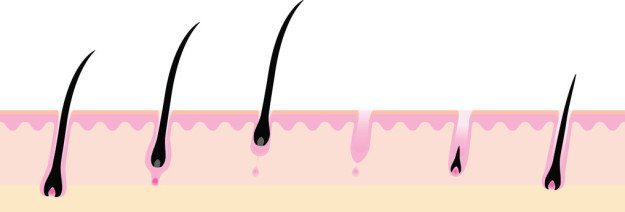14 Surprising Things That Can Cause Hair Loss

It’s a lot more common than you think.
Have you ever lost more hair than normal and freaked out thinking you were going bald?
Hair loss is considered to be any shift in your normal hair pattern: losing more than what you would typically experience, thinning in certain areas of the scalp, bald patches, etc. It’s actually very common, but also typically very stressful.
So BuzzFeed Health spoke with Dr. Lindsey Bordone, dermatologist at ColumbiaDoctors Midtown, Dr. Arielle R. Nagler, assistant professor of dermatology at NYU Langone Medical Center, and Dr. Dawn Marie Davis, dermatologist at the Mayo Clinic, to find out why hair loss happens and what you can do about it.
FOX / Via tenor.co
In order to understand hair loss, it’s important to first understand how hair grows.

Each individual strand of hair goes through the anagen stage, which is essentially when it’s growing out of the hair follicle, Davis tells BuzzFeed Health. This is the longest stage, which can last several years for each strand of hair.
Then it goes through the catagen phase, which is the resting stage, where the hair is just chilling for about 10 days, waiting to transition to the telogen phase, the “shedding phase,” which is when the hair begins to fall out, she explains. Then the whole process starts all over again.
Alphabetmn / Via Getty Images
While there are lots of things that can contribute to hair loss, there are three main disorders that disrupt the growth process and can cause your hair to fall out:
• Telogen effluvium is a typically reversible condition in which your hair starts falling out due to an extremely stressful event, says Bordone. Your brain tells your body to conserve energy, making your hair go into survival mode. Because your body doesn’t want to spend energy on growing your hair, it reaches the telogen phase quicker, causing you to lose hair in up to three months from that stressful event.
• Androgenetic alopecia, also known as male/female pattern hair loss,
is genetic and is usually described as feeling like your hair is gradually thinning out, as opposed to losing a lot of hair at one time, Davis explains. Your hair follicles are gradually shrinking — due to the stimulation of the follicle by testosterone — until they ultimately shrivel and die so the hair can no longer grow.
• Alopecia areata is an autoimmune disease in which the immune system attacks the hair follicles. Davis says that this is typically characterized by losing large clumps of hair at once. Rarely, small patches of alopecia areata can progress to alopecia totatlis (total baldness) or alopecia universalis (complete loss of body hair altogether).
DreamWorks Pictures / Via gifsec.com



